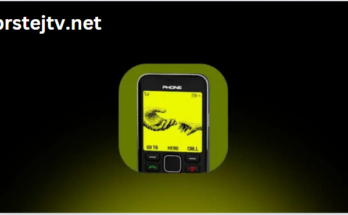In the ever-evolving world of mobile applications, developers and designers are continuously exploring innovative ways to engage users. One such novel feature is the rolling app icon. Unlike traditional static icons, a rolling app icon adds an element of fun and interactivity, making it more than just a simple button on a user’s screen. This article will delve into what a rolling app icon is, its benefits, how it can be implemented, and its impact on user experience.
What is a Rolling App Icon?
A rolling app icon is a dynamic icon that reacts to user interactions, such as touch or tilt of the device. When a user interacts with the icon, it rolls, rotates, or moves in a way that makes it seem lively. This movement can vary from a simple rotation to complex animations that give the illusion of a 3D object rolling on the screen. The concept is similar to the physical rolling of a ball but implemented digitally within the app’s icon.
Benefits of Using Rolling App Icons
- Enhanced User Engagement: Rolling app icons add an interactive element to the user interface. The playful movement can captivate users’ attention, making them more likely to engage with the app. This increased interaction can lead to higher app usage rates and better user retention.
- Improved User Experience: A rolling icon offers a unique and delightful user experience. It breaks the monotony of static icons and provides a sense of novelty. Users often appreciate and remember apps that offer a distinctive interface, leading to a positive impression.
- Brand Differentiation: In a crowded app market, standing out is crucial. A rolling app icon can serve as a distinctive branding element, setting the app apart from competitors. It adds to the brand personality, making the app more recognizable and memorable.
- Increased Visual Appeal: Moving elements are inherently more attractive to the human eye. A rolling icon can make the app’s home screen more visually appealing. The movement can be subtle or pronounced, depending on the app’s theme and target audience.
- Functional Interaction: Beyond aesthetics, rolling icons can serve functional purposes. For instance, an icon could roll to indicate a notification or change in the app’s status. This use of motion provides users with visual cues about app activity, enhancing their overall experience.
How to Implement Rolling App Icons
Implementing a rolling app icon requires a blend of creative design and technical know-how. Here are the steps typically involved in creating a rolling app icon:
- Design the Icon: The first step is to design the icon with rolling in mind. This involves creating a shape that visually lends itself to rolling or rotating, such as a ball, wheel, or disc. The design should also align with the app’s branding and aesthetics.
- Use Animation Libraries: Developers can use animation libraries and frameworks to bring the rolling effect to life. Popular libraries for creating animations in mobile apps include Lottie, Framer Motion, and Flutter’s animation library. These tools provide the necessary functions and controls to animate the icon effectively.
- Implement Physics-Based Movement: For a more realistic rolling effect, physics-based movement can be integrated. This involves using algorithms that simulate real-world physics, such as gravity and friction. Tools like Unity and Cocos2d provide physics engines that can be used to achieve this effect.
- Add Interaction Triggers: The rolling effect should be triggered by specific user actions, such as a tap, swipe, or tilt. Developers can program these triggers using the app’s framework (e.g., Swift for iOS or Kotlin for Android). The rolling animation should be responsive to these interactions for a seamless experience.
- Optimize Performance: Rolling app icons, while visually appealing, should not compromise the app’s performance. Developers must ensure that the animations are optimized to run smoothly without draining the device’s battery or causing lag.
Use Cases for Rolling App Icons
- Gaming Apps: Rolling icons are a natural fit for gaming apps, where dynamic and interactive elements are expected. They can serve as a playful entry point into the game, setting the tone for the user experience.
- Entertainment and Media Apps: Apps related to music, videos, and other entertainment content can use rolling icons to convey the playful and dynamic nature of their offerings. For example, a music app might have a rolling vinyl record as its icon.
- Lifestyle and Fitness Apps: Rolling icons can also be used in lifestyle and fitness apps to indicate activity and movement. A fitness app might have a rolling dumbbell icon, adding a fun and motivating touch.
- Educational Apps: Educational apps for children can use rolling icons to make learning more engaging. A rolling book or globe icon can draw children’s attention and make the learning experience enjoyable.
Impact on User Experience
The introduction of rolling app icons can significantly enhance user experience by making it more interactive and enjoyable. Users appreciate small details that make the interface lively and engaging. However, it is essential to balance fun with functionality. Overuse of animations or complex interactions can lead to a cluttered and distracting interface.
Rolling icons should align with the app’s overall design and purpose. If done correctly, they can become a signature element that users look forward to interacting with. Moreover, rolling icons can contribute to a consistent brand identity across different platforms, reinforcing the app’s image in the user’s mind.
Conclusion
Rolling app icons represent a creative leap in mobile app design, offering a unique way to engage users and enhance the overall experience. By adding a touch of interactivity and playfulness, these icons can make apps more appealing and memorable. As technology evolves, we can expect to see more innovative uses of rolling icons and other dynamic elements, pushing the boundaries of user interface design. Whether you are a developer or a designer, considering the implementation of a rolling app icon could be a step towards creating a more engaging and delightful app experience.



